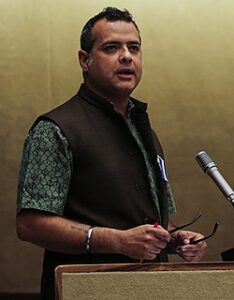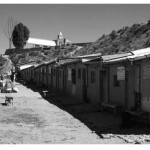Paul Bischoff – Internet Censorship 2023: A Global Map Of Internet Restrictions
 More than 60 percent of the world’s population (5.03 billion people) uses the internet.
More than 60 percent of the world’s population (5.03 billion people) uses the internet.
It’s our source of instant information, entertainment, news, and social interactions.
But where in the world can citizens enjoy equal and open internet access – if anywhere?
In this exploratory study, our researchers have conducted a country-by-country comparison to see which countries impose the harshest internet restrictions and where citizens can enjoy the most online freedom. This includes restrictions or bans for torrenting, pornography, social media, and VPNs. Also whether there are restrictions or heavy censorship of political media and any additional restrictions for messaging/VoIP apps.
Although the usual culprits take the top spots, a few seemingly free countries rank surprisingly high. With ongoing restrictions and pending laws, our online freedom is at more risk than ever.
We scored each country on six criteria. Each of these is worth two points aside from messaging/VoIP apps which is worth one (this is due to many countries banning or restricting certain apps but allowing ones run by the government/telecoms providers within the country). The country receives one point if the content—torrents, pornography, news media, social media, VPNs, messaging/VoIP apps—is restricted but accessible, and two points if it is banned entirely. The higher the score, the more censorship.
Source: https://www.comparitech.com/blog/vpn-privacy/internet-censorship-map/
Follow: https://www.comparitech.com/
Also follow: https://freedomhouse.org/
The Brazilian Hard Right Are Already A Political Cliché
On January 8, 2023, large crowds of people—dressed in colors of the Brazilian flag—descended on the country’s capital, Brasília. They invaded the federal building and Supreme Court and vandalized public property. This attack by the rioters had been widely expected since the invaders had been planning “weekend demonstrations” for days on social media.
On January 1, Luiz Inácio Lula da Silva (known as Lula) was formally sworn in as Brazil’s president, but during his inauguration there was no such melee. It was as if the vandals were waiting until the city was quiet and when Lula himself was out of town. For all the braggadocio of the attack, it was an act of extreme cowardice.
The man whom Lula defeated—former Brazilian President Jair Bolsonaro—was nowhere near Brasília. He was not even in Brazil. He fled before the inauguration—to escape prosecution, presumably—to Orlando, Florida, in the United States. But even if Bolsonaro was not in Brasília, Bolsonaristas—as his supporters are known—were everywhere in evidence. Before Bolsonaro lost the election to Lula on October 30, 2022, Le Monde Diplomatique Brasil suggested that Brazil was going to see “Bolsonarism without Bolsonaro.” The political party with the largest bloc in the Chamber of Deputies and the Senate in Brazil is the far-right Liberal Party, which served as the political vehicle of Bolsonaro during his presidency. The toxic right-wing stain remains both in the elected bodies and on social media.
The two men responsible for public safety in Brasília—Anderson Torres, secretary of public security of the federal district, and Ibaneis Rocha, governor of the federal district—are close to Bolsonaro. Torres was a minister in Bolsonaro’s government and was on holiday in Orlando during the attack; Rocha took the afternoon off, a sign that he did not want to be at his desk during the attack. For their complicity in the attack, Torres was dismissed from his post, and Rocha has been suspended. The federal government has taken charge of security, and thousands of “fanatic Nazis,” as Lula called them, have been arrested.
The slogans and signs that pervaded Brasília were less about Bolsonaro and more about the hatred felt for Lula, and the potential of his pro-people government. Big business—mainly agribusiness—sectors are furious about the reforms proposed by Lula. This attack was partly the result of the built-up frustration felt by people who have been led to believe that Lula is a criminal—which the courts have shown is false—and partly is a warning from Brazil’s elites. The ragtag nature of the attack resembles the January 6, 2021, attack on the U.S. Capitol by supporters of former U.S. President Donald Trump. The illusions about the dangers of a communist U.S. President Joe Biden or a communist Lula seem to have masked the animosity of the elites to even the mildest rollback of neoliberal austerity.
Author Bio:
This article was produced by Globetrotter.
Vijay Prashad is an Indian historian, editor, and journalist. He is a writing fellow and chief correspondent at Globetrotter. He is an editor of LeftWord Books and the director of Tricontinental: Institute for Social Research. He is a senior non-resident fellow at Chongyang Institute for Financial Studies, Renmin University of China. He has written more than 20 books, including The Darker Nations and The Poorer Nations. His latest books are Struggle Makes Us Human: Learning from Movements for Socialism and (with Noam Chomsky) The Withdrawal: Iraq, Libya, Afghanistan, and the Fragility of U.S. Power
Source: Globetrotter
Why The Climate Justice March In South Korea Could Be A Game Changer For The Environment
On September 24, 2022, more than 30,000 people occupied the main roads of downtown Seoul, South Korea, for the nation’s largest climate justice march. The sheer turnout of people from all walks of life and the participation by a wide range of advocacy groups were a testament to the impact of climate change on every aspect of life: human rights, women’s rights, religion, food insecurity, and labor rights. For many of these advocacy movements in Seoul, recent crises like COVID-19 have brought home the urgent need to address the climate crisis.
Opening with a rally in Namdaemun Plaza at 3 p.m., the two-hour march occupied four out of six lanes of Seoul’s main Sejong-daero Boulevard. Standing on moving flatbed trucks, people spoke about the intersectionality of the climate crisis and other issues, including labor insecurity, housing instability, and social discrimination.
Ten megaphone-mounted flatbed trucks placed at regular intervals logistically ushered large crowds of protesters—brightly clad youth in headdresses in sunflower or coral reef shapes, families wrapped in “Carbon Neutral” cloak-like banners, Buddhist monks with globe-painted temple lanterns, Catholic nuns wearing “Save the Earth” tunics and holding “Anti-nuclear NOW” placards, regional community groups demanding a stop to coal plants and new airports, and countless union members in matching vests, flying union banners.
The groups of protesters regularly chanted in unison: “lives over profit” and “we can’t live like this anymore!” Drumming, music, and dance filled the streets. During a five-minute “die-in,” protesters fell to the ground, front to rear, like cascading dominoes.
The march was the result of three months of planning, promotion, and fundraising by Action for Climate Justice, a coalition of more than 400 civic, regional/community, and trade union movements united under the guiding concept of climate justice.
Like previous marches, environmental NGOs played leading roles in the organizing, such as Green Korea United and the Korean Federation for Environmental Movements (KFEM), alongside youth movements. But 2022 also saw a large influx of long-established and new movement groups not exclusive to environmental activism but for whom the climate crisis has become central to their agenda—human rights groups, women’s groups, social movements, political parties, religious networks, food cooperatives, irregular contract workers, and trade union movements.
From the Human Rights Movement Sarangbang, combating the violence of political and economic discrimination and exploitation since 1993, to the recent Human Rights Movement Network Baram working to secure the rights and dignity of discriminated groups, such as women, the disabled, LGBTQ communities, immigrants, and irregular contract workers—the COVID-19 pandemic has brought the climate crisis to the fore of their activities.
Climate policy has likewise become a pressing issue for the Anti-Poverty Alliance, which emerged during mass layoffs and bankruptcies following the 1997 financial crisis and neoliberalization of the Korean economy. This “IMF era” alliance has grown to include 49 member organizations engaged in various struggles for livelihood, from the fight for a universal basic income to alternatives to substandard housing (including polytunnel villages where people live in greenhouse-like shelters made out of vinyl) and housing instability in the face of Korea’s speculative housing markets and climate change.
Religious orders are also a sizable part of the movement now. Building on their legacy of sheltering democracy movement activists in the 1970s and 1980s, Korea’s faith-based groups have been organizing a climate movement that is cross-denominational and transnational such as the pan-Asian Inter-Religious Climate and Ecology Network.
The large outpouring of protesters in September 2022 even surpassed organizers’ expectations. Over the past two years, pandemic restrictions on gatherings and suspension of protest permits in South Korea have brought activism online and into classrooms and have included the unconventional occupation of public spaces. Some of the most visible climate actions in Seoul in 2021 appeared not on the city streets but rather above and underneath them, on large billboards mounted on skyscrapers and LCD screens installed inside subway lines. The yearlong campaign from 2020 to 2021, Climate Citizens 3.5, which was jointly conducted with artists, environmental groups, and researchers, used a chunk of its total budget, the largest allotted by Arts Council Korea, to rent 30 large-scale outdoor electronic billboards, 219 digital screens inside 21 subway stations, and all of the advertising space in 48 subway cars. Spread across the city, the billboards and displays were tailored to convey climate change-focused messages targeted to each location—climate policy changes for the traffic-heavy city center at Gwanghwamun and consumption-related taglines for shopping districts in Myeongdong and Gangnam: “Spend Less, Live More!”
Such overlapping and expanding networks in the climate justice coalition attest to the burgeoning consciousness of the climate crisis for a population whose Cold War-divided peninsula placed North Korea and South Korea in the shadow of a nuclear winter long before the threat of exterminism via global warming became an issue. As policy researcher and activist of the Climate Justice Alliance Han Jegak states, “while climate change denial is not a widespread problem in South Korea as it is in other countries, there is still a generalized denial about the urgency to act, the attitude is that we can follow what other countries are doing.” He adds, “people express fear and depression over climate change, but such feelings do not lead to proactive actions. We need to forge alternatives collectively in place of mostly individualized actions like hyper-recycling. The movement needs to harness the anger related to the climate crisis and mobilize that.” One such concrete outcome from the march was the exponential rise in signatories successfully introducing a civil memorandum to stop the opening of new coal plants to the National Assembly floor.
For many in the movement, the unprecedented rainstorms and flooding that took the lives of several people including a family in a semi-basement flat in Seoul in August 2022 has inflamed the call to action. For the Korean Confederation of Trade Unions (KCTU), this incident came as a personal loss, as one of the deceased was a union activist. The largest independent democratic trade union association in Korea with 1.1 million members, KCTU formalized its participation in climate action networks when it voted in a special committee on climate justice within its organization in February 2021. Environmental groups have long reached out to KCTU for more active participation in the movement as “public and energy sector unions and irregular contract workers are situated at the forefront of struggles over policy changes as well as facing the brunt of its effects,” as emphasized by KFEM activist and member of the climate coalition Kwon Woohyun. In many ways, the union’s participation in the climate movement was a significant development, explains Kim Seok, KCTU policy director, because “it was a decision to make the climate issue a key component of KCTU policies, including the collective bargaining agreement process, which is the most fundamental activity for unions.” In 2022, KCTU members circulated the most posters and mobilized 5,000 union activists to join the climate march.
For a country whose export economy is centered on energy-intensive industries, environmental activism by labor unions faces complicated challenges. KCTU must contend with internal pressure from rank-and-file workers seeking compensation for job losses from the transition to clean energy as well as the broader national context in which the state has relinquished the development of clean energy industries to profit-seeking private sector companies.
In the face of these challenges, KCTU’s proactive participation in the Action for Climate Justice coalition and its actions to work jointly with wide-ranging environmental and social movements hold the promise of broadening and solidifying the foundations of the climate movement going forward, while signaling the beginning of a potentially powerful new form of climate activism taking shape in South Korea.
Author Bio:
This article was produced by Globetrotter.
Alice S. Kim received her PhD from the Rhetoric Department at UC Berkeley and is a writer, researcher, and translator living in Seoul. Her publications include “The ‘Vietnamese’ Skirt and Other Wartime Myths” in The Vietnam War in the Pacific World (UNC Press, 2022) and “Left Out: People’s Solidarity for Social Progress and the Evolution of Minjung After Authoritarianism,” in South Korean Social Movements (Routledge, 2011).
Source: Globetrotter
A Progressive Political Economy Guide To Inflation
 Mainstream economics failed miserably in addressing the financial crisis of 2007-08, so why would it be any different now when it comes to making sense of the rising inflation of the past 18 months?
Mainstream economics failed miserably in addressing the financial crisis of 2007-08, so why would it be any different now when it comes to making sense of the rising inflation of the past 18 months?
Since 2021, prices have surged dramatically across countries and inflation has become a global challenge.
Global central banks delivered historic rate hikes in 2022 in order to tame inflation and continued doing so even when inflation was falling, thereby risking a global recession.
Indeed, for the past five months, average inflation in the U.S. has been at 2.4%. Across Europe, inflation has also been dropping. In Spain, for instance, consumer prices rose 5.8% in December, down from 6.8% in the previous month. The December figure represented the fifth consecutive month of declining inflation in Spain. Yet, the European Central Bank—which like the U.S. Federal Reserve has also set the target rate for inflation at the arbitrary number of 2% per year—plans to continue raising interest rates “significantly further” as it deems that inflation “remains far too high and is projected to stay above the target for too long.”
Meanwhile, both the U.S. and European economies are expected to enter a recession in 2023. For what it’s worth, the head of the IMF expects a full one-third of the world to slide into recession this year.
What has been causing the upward trends in inflation and why do central banks around the world keep raising interest rates, a policy which will slow economic growth and result in lower wage increases and fewer jobs? Several factors are at play in causing a surge in prices, which include the Covid-19 pandemic, geopolitics, and corporate mark-ups and profit margins, while pure capitalist logic and interests explain why central banks are raising interest rates to fight inflation.
These were some of the conclusions reached by the progressive economists who participated in an international conference on “Global Inflation Today” organized by the renowned Political Economy Research Institute (PERI) at the University of Massachusetts Amherst and held from December 2-3, 2022.
To start with, a co-authored paper by Robert Pollin (Distinguished Professor of Economics and Co-Director of PERI at UMass Amherst) and Hanae Bouazza shows convincingly that there is no justification why the Federal Reserve and other central banks aim for an inflation target of 2%. Indeed, their research finds “no consistent evidence supporting the conclusion that economies at any income level will achieve significant GDP benefit when they maintain inflation within low single digits, i.e., between the 0 – 2.5 percent inflation range.” Not only that, but the “evidence… suggests that, in general, economies are more likely to achieve higher GDP growth rates in association with inflation ranges in the range of 2.5 – 5 percent, 5 – 10 percent and, for the most part, 10 – 15 percent.”
These are significant findings which raise serious questions about the goals of macro policy. Indeed, if inflation-targeting policy is not conducive to promoting economic growth, what is its primary aim? Citing the work of scholars who have done extensive research around this question, such as Gerald Epstein (Professor of Economics and Co-Director of PERI at UMass Amherst) and others, Pollin and Bouazza suggest that corporate profitability is the primary aim of inflation-targeting policy. “Protecting the wealth of the wealthy” is the reason why the Fed has taken aggressive steps to tame inflation by raising interest rates, Epstein pointed out in a recent joint interview with Pollin.
With regard to the actual causes of inflation in 2021-22, a paper co-authored by Asha Banerjee and Josh Bivens of the Economic Policy Institute identifies the Covid-19 pandemic and the Russian invasion of Ukraine as key factors in the inflationary surge of the past 18 months or so but argues that profit mark-ups added immensely to inflationary pressures over the same period. Of equal importance here is that the authors present more than sufficient evidence to counter the mainstream economic perspective that lays the blame for the rise of inflation in the U.S. on the American Rescue Plan. Indeed, the data they present, on both the domestic and international fronts, does not support the claim that too much fiscal spending overheated the economies, fueling runaway inflation.
Another paper presented at the PERI conference, co-authored by C. P. Chandrasekhar and Jayati Ghosh, on how low-and middle-income countries can respond to inflation, also argues that there are more important factors than the pandemic and Russia’s invasion of Ukraine behind the current inflation crisis. The sharp rise in global prices of food and fuel, Chandrasekhar and Ghosh contend, was driven by “profiteering, price expectations, and associated speculation.” They show, for instance, that while there were sharp spikes in the prices of food and fuel between February and July 2022, “the supplies of oil and gas to Europe remained largely unaffected.”
The analyses on inflation and its causes, as well as the actual aims of inflation-targeting policy, made by all of the presenters at the PERI conference (which included many leading progressive economists such as William Spriggs, Gerald Epstein, Thomas Ferguson, Nancy Folbre, James K. Galbraith, Servaas Storm, and Isabella Weber, among others) can be described as a Progressive Political Economy Guide to Inflation. Indeed, they show how powerful heterodox economic approaches are in disclosing the real forces driving inflation and the actual reasons for central banks raising sharply interest rates. And, by extension, they also reveal the flaws and limitations of mainstream economics, which is in dire need of a major overhaul.
Source: https://www.commondreams.org
C.J. Polychroniou is a political economist/political scientist who has taught and worked in numerous universities and research centers in Europe and the United States. His latest books are The Precipice: Neoliberalism, the Pandemic and the Urgent Need for Social Change (A collection of interviews with Noam Chomsky; Haymarket Books, 2021), and Economics and the Left: Interviews with Progressive Economists (Verso, 2021).
Which Government Does The United States Recognize In Venezuela?
On January 3, 2023, Shaun Tandon of Agence France-Presse asked U.S. State Department spokesperson Ned Price about Venezuela. In late December, the Venezuelan opposition after a fractious debate decided to dissolve the “interim government” led by Juan Guaidó. From 2019 onward, the U.S. government recognized Guaidó as the “interim president of Venezuela.” With the end of Guaidó’s administration, Tandon asked if “the United States still recognize[s] Juan Guaidó as legitimate interim president.”
Price’s answer was that the U.S. government recognizes the “only remaining democratically elected institution in Venezuela today, and that’s the 2015 National Assembly.” It is true that when the U.S. government supported Guaidó as the “interim president” of Venezuela, it did so because of his role as the rotating president in that National Assembly in 2019. Since the presidency of the National Assembly rotates annually, Guaidó should have left the position of “interim president” by the end of 2020. But he did not, going against Article 233 of the Venezuelan Constitution of 1999, which he cited as the basis for his ascension in 2019.
Price said, “The 2015 National Assembly has renewed its mandate.” However, that assembly was dissolved since its term expired and it was replaced—after an election in December 2020—by another National Assembly. The U.S. government called the 2020 election a “political farce.” But when I met the leaders of Venezuela’s two historic opposition parties in Venezuela in 2020—Pedro José Rojas of Acción Democrática (AD) and Juan Carlos Alvarado of Comité de Organización Política Electoral Independiente (COPEI)—they told me that the 2020 election was legitimate and that they just did not know how to overrun the massive wave of Chavista voters. Since the members of the new assembly took their seats, the 2015 assembly has not set foot in the Palacio Federal Legislativo, which houses the National Assembly, near Plaza Bolívar in Caracas.
In essence, then, the U.S. government believes that the real democratic institution in Venezuela is one that has not met in seven years, and one whose political forces decided—against the advice of AD and COPEI—to boycott the 2020 election.
Meanwhile, in early January 2023, Venezuela’s President Nicolás Maduro spoke with veteran journalist Ignacio Ramonet. Maduro told Ramonet that he is “prepared for dialogues at the highest level and with relations of respect.” He hoped that “a halo of light” would reach the office of U.S. President Joe Biden and allow the United States to put its “extremist policy aside.” Not only did Ned Price refuse this olive branch, but he also said that the U.S. approach to “Nicolás Maduro is not changing.” This is an awkward statement since members of Price’s own government went to Caracas in March and June of 2022 to meet with the Maduro administration and talk about the normalization of oil sales and the release of detained U.S. citizens.
Meanwhile, Tandon’s question hangs over the White House.
Author Bio:
This article was produced by Globetrotter.
Vijay Prashad is an Indian historian, editor, and journalist. He is a writing fellow and chief correspondent at Globetrotter. He is an editor of LeftWord Books and the director of Tricontinental: Institute for Social Research. He is a senior non-resident fellow at Chongyang Institute for Financial Studies, Renmin University of China. He has written more than 20 books, including The Darker Nations and The Poorer Nations. His latest books are Struggle Makes Us Human: Learning from Movements for Socialism and (with Noam Chomsky) The Withdrawal: Iraq, Libya, Afghanistan, and the Fragility of U.S. Power>
Source: Globetrotter
‘They Shot Them Down Like Animals’: Massacre At Peru’s Ayacucho
Survivors and family members of victims of the massacre in Ayacucho on December 15 denounce that the army treated protesters like war targets, reminiscent of violence faced during the internal armed conflict.
On December 15, 2022, while helicopters flew overhead, members of Peru’s national army shot down civilians with live bullets in the outskirts of the city of Ayacucho. This action was in response to a national strike and mobilization to protest the coup d’état that deposed President Pedro Castillo on December 7.
On December 15, hundreds of university students, shopkeepers, street vendors, agricultural workers, and activists gathered at the center of Ayacucho to express their discontent over the removal of Castillo and continued their mobilization toward the airport. Similar action was witnessed in several other cities across the southern Andean region of the country.
As protesters approached the airport, members of the armed forces opened fire and shot tear gas canisters directly at them. The firing by the army from the helicopters proved to be the most lethal. As the hundreds of unarmed people ran for their lives, the shooting continued.
Ten people were killed as a result of this violence inflicted by the army, and dozens more were injured, according to official numbers provided by the ombudsman’s office. At least six people are still fighting for their lives in hospitals in Peru’s capital Lima and in Ayacucho. Autopsies of 10 of those who died in Ayacucho show that six of the victims died from gunshot wounds to the chest. The youngest was just 15 years old.
On December 27, Reuters reported how one of these fatal victims in Ayacucho, 51-year-old Edgar Prado, was shot and killed while attempting to help someone else who had been shot down during the protests.
The exceedingly violent response of the security forces to the anti-coup protests across Peru was widely condemned. A delegation of the Inter-American Commission on Human Rights (IACHR) visited the country from December 20 to 22 to receive testimonies from local human rights organizations and victims about the violent repression suffered by protesters and also spoke to families of the 28 fatal victims. The delegation traveled to Ayacucho on December 22.
More than a dozen other family members, Ayacucho inhabitants, organizers, and a couple of independent journalists, including myself, waited on the sidewalk of one of the city’s narrow and colorful streets as the meeting was underway. As people came and went, much of the events and tragedies of December 15 were recounted.
The Massacre
“They won’t show you this on the news here,” Carmen (name changed) told me as she showed me a video on her phone of a young boy with blood all over his shirt being dragged to safety by fellow protesters. “That’s her nephew,” she said, pointing to a woman sitting on the ground.
Pedro Huamani, a 70-year-old man who is a member of the Front in Defense of the People of Ayacucho (FREDEPA), was accompanying the victims waiting outside the IACHR meeting. “We have suffered a terrible loss,” he told me, “I was present that day in a peaceful march toward the airport.”
“When they began to shoot tear gas grenades and bullets at us, I started to choke, I almost died there,” Huamani said. “I escaped and went down to the cemetery, but it was the same, we were trying to enter and they started to shoot at us from behind. Helicopters were flying overhead and from there they shot tear gas grenades at us, trying to kill us.”
Carmen brought over some of her friends and one of them, who was wearing a gray sweatsuit, told me, “We all live near the airport, and saw everything happen. You should’ve seen how they shot them down like animals. We tried to help some of the injured, but it was hard.”
The massacre in Ayacucho, as well as the violent repression across the country, has only intensified people’s demand that Dina Boluarte step down. Boluarte was sworn in on December 7 immediately following the coup against Castillo. In interviews and public addresses, she has justified the use of force by police against protesters calling their actions as acts of “terrorism” and “vandalism.”
Huamani, while shaking and holding back tears, said: “She is a murderous president and in Huamanga, we do not want her, nor do we recognize her as president because this woman ordered the police and the army to shoot at us Peruvians. And these bullets, these weapons, are really bought by us, not by the army, nor the soldiers, but by the people. And for them to kill us is really horrible.”
The anger felt by Ayacucho residents is also linked to the historical undermining of Peruvian democracy and the economic exclusion suffered by the regions outside of Lima. Huamani explained: “They took out our president [Castillo] so this is not a democracy. We are not a democracy, we are in [state of] war, but not just in Ayacucho and Huamanga, but also in Arequipa, Apurímac, Cusco. In these regions, we are suffering from poverty, we can no longer survive, we are dying of hunger… and these right wingers want to make us their slaves, but we won’t permit this because we are responding and resisting.”
Old Wounds Ripped Open
December 15 was not the first time civilians in Ayacucho were massacred by the Peruvian armed forces. Many who were present on December 15 said that the warlike treatment received by the peaceful protesters was reminiscent of the days of the two-decades-long internal armed conflict that Peruvians suffered through more than 20 years ago.
“They still treat us as if we were all terrorists,” a family member of one of the victims of the protests pointed out.
As part of the state’s campaign against the guerrilla insurgency, it tortured, detained, disappeared, and murdered tens of thousands of innocent peasants and Indigenous people, accusing them of supporting or being part of the insurgency.
The population of Ayacucho was one of the hardest hit. According to reports by the Truth and Reconciliation Commission, which was set up to look into the human rights violations, of the estimated 69,280 fatal victims of the internal armed conflict in Peru from 1980-2000, 26,000 were killed or disappeared by state actors or insurgent groups in Ayacucho. Thousands of people that fled their towns for the city of Ayacucho during the conflict continue to search for their loved ones and demand justice.
One of them is Paula Aguilar Yucra, who I met outside the IACHR meeting. Like more than 60 percent of people in Ayacucho, Indigenous Quechua is her first language. The 63-year-old is a member of the Ayacucho-based National Association of Relatives of Kidnapped, Detained and Disappeared of Peru (ANFASEP). She fled her rural community in Usmay for Ayacucho in 1984 after her mother was killed and her brother was taken by soldiers and never seen again.
Nearly 40 years later, she mourns again. Her grandson, 20-year-old José Luis Aguilar Yucra, father of a two-year-old boy, was killed on December 15 by a bullet to the head as he attempted to make his way home from work.
In a vigil held on the afternoon of December 22, Paula stood tall with the other members of ANFASEP and held a sign reading: “Fighting today does not mean dying tomorrow.”
Author Bio:
This article was produced by Globetrotter.
Zoe Alexandra is a journalist and co-editor of Peoples Dispatch
Source: Globetrotter





